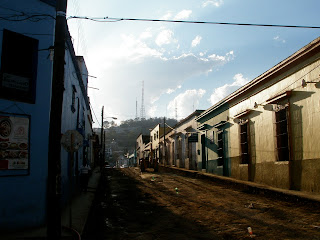When is a watercolor done?
Part one
Knowing when a painting is finished should be easy, right? You just stop when it doesn’t need anything more. Why, then, is over-painting the most common disaster in the practice of watercolor?
We all know that watercolor does not reward uncertainty or indecision. Changing your mind after you’ve committed to an approach usually leads to some kind of mud. It makes sense, therefore, to work confidently, and to leave the paint alone once it’s attached to the paper. Confidence comes largely from experience, of course, but to some extent it also comes from being thoughtful. Clarity of mind leads to clarity on the paper.
Working in watercolor can feel like juggling a dozen balls at once. There seem to be too many variables to consider while you‘re up to your neck in trying to stop your painting from slipping away. But if you can keep track of just four things (color, value, wetness and composition), the odds of making the stroke you intend are pretty good. In fact, just being mindful of wetness and value will make a big difference in your painting.
It only works, though, if you take responsibility for the variables. It’s not enough to be thinking wishfully about wetness. I often hear painters explain a mishap by saying “the paper got too wet”. Hmmm…and how did that happen? You have to be in charge. Sometimes blind luck will save the day, but it’s foolish to count on it.
Developing good habits of awareness is mostly a matter of remembering to ask a few simple questions before you commit paint to paper. For example, asking “How dark do I want this stroke to be? “ will keep you from having to go back over a passage to make it darker or lighter. And how do you know how dark you want it to be? Compare it to what you already know for sure. Find something in the painting or the image source that is lighter, and something that is darker. In Migration Route the ridgeline of the distant mountains needs to be darker than the sky, but lighter than the trees that will come later.
 |
| Migration Route Tom Hoffmann |
Knowing where you want the painting to go makes it easier to see when you’ve done enough. You will “recognize” the look you were after if your intentions are clear. Far too often we rely on an external source (usually a photo) as the basis for knowing whether the painting is finished. If you look to the photo to see if you’ve “got everything”, the answer will always be “No, there’s more”.
There is no end to the information a photo can carry, and trying to cram it all onto the page eventually leads to another overworked painting. This is especially dangerous when you feel that an unidentified “something” is not right about a work in progress. If you check in with the photo, you will surely find something you haven’t noticed before, and assume (or hope) that it’s what’s needed to pull everything together. More likely, the real problem is that you’ve already got too much information in the painting, and adding more can only make it worse.
Making conscious decisions in advance about which information is essential gives you an internal basis for knowing when to stop. Once again, remembering to ask a couple of questions before you start painting can reveal the essence of your interpretation:
Why have you selected the subject in the first place?
Take time to articulate what you see and feel here that caught your attention. Say it out loud, or write it down. You may think you won’t forget it, but it is easy to get wrapped up in technical issues and lose track of your original purpose.
In terms of form (color, value, wetness and composition), how can you be sure that the qualities you want will be in the finished painting?
The job is to identify the aspects of the image that must remain true, no matter where your individual style takes you. For example, the painting On the Green appears to be all about color. To translate into watercolor the feeling of paddling through the canyons of the Green River, I wanted to use intense color, but I also wanted to establish a believable sense of light, space and substance. How could I exaggerate color and still hold onto an effective illusion?
 |
| On the Green Tom Hoffmann |
Remember earlier where I suggested that keeping track of value and wetness would make a big difference in your work? Looking at a monochrome version of the painting reveals that it’s the relative dark and light that does most of the work required to pull off the illusion. This is what needs to be accurate. Holding on to this essential aspect frees me to have fun with color.
If you are concerned that a thoughtful approach will stifle spontaneity, you needn’t be. Consider the value comparison from Migration Route, above. Once you have discerned the dark/light range that will work for the ridgeline, you can apply the paint with confidence. Within that range there are a great many strokes, not just one, that will do the job. It doesn’t have to be perfect, just perfect enough. When you know the relatively few things that need to be “correct”, you are liberated by certainty. Not having to be too cautious, you can make your mark and let it be. A bold stroke goes a long way toward convincing the viewer that everything is as it must be.
























